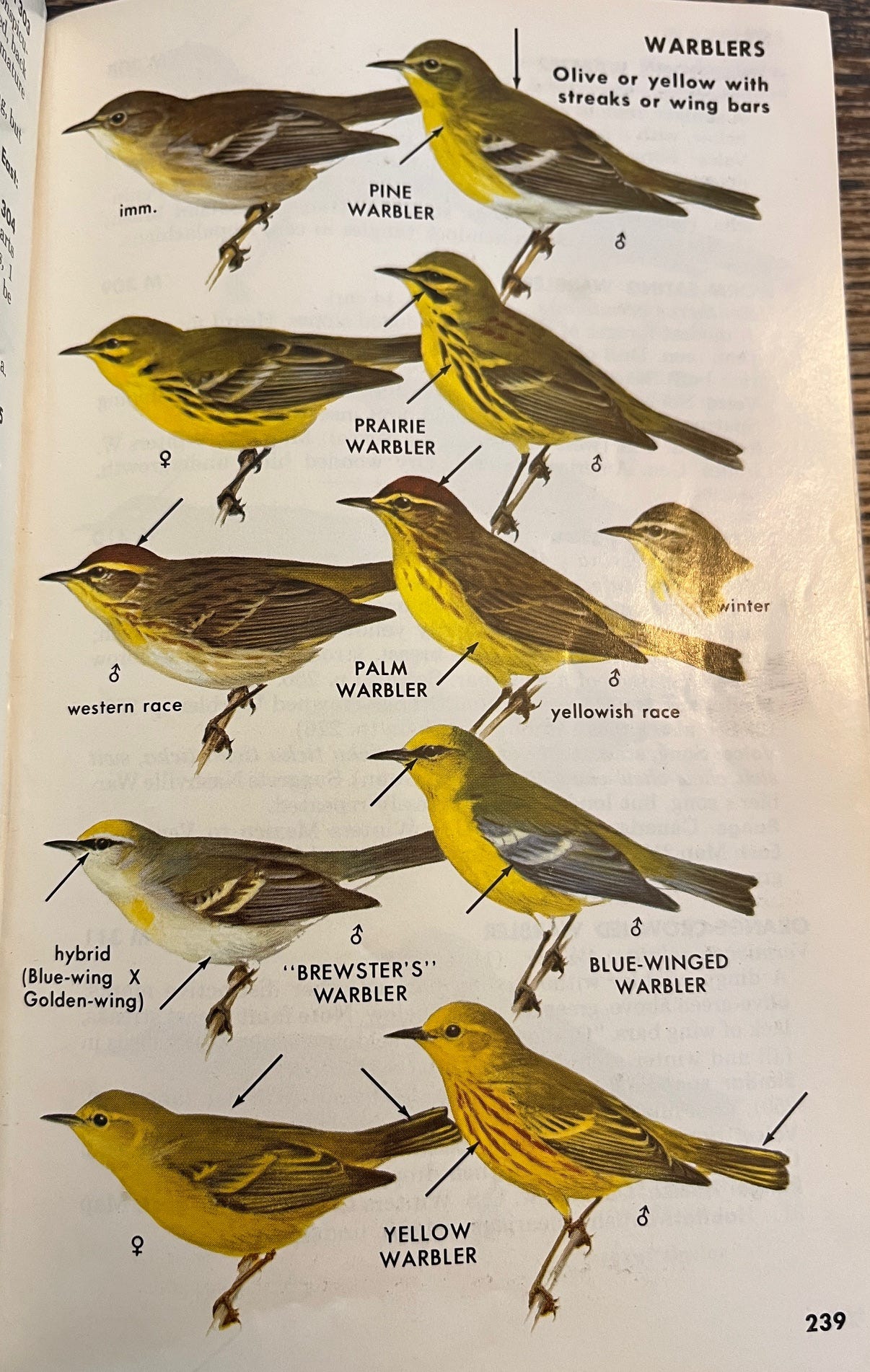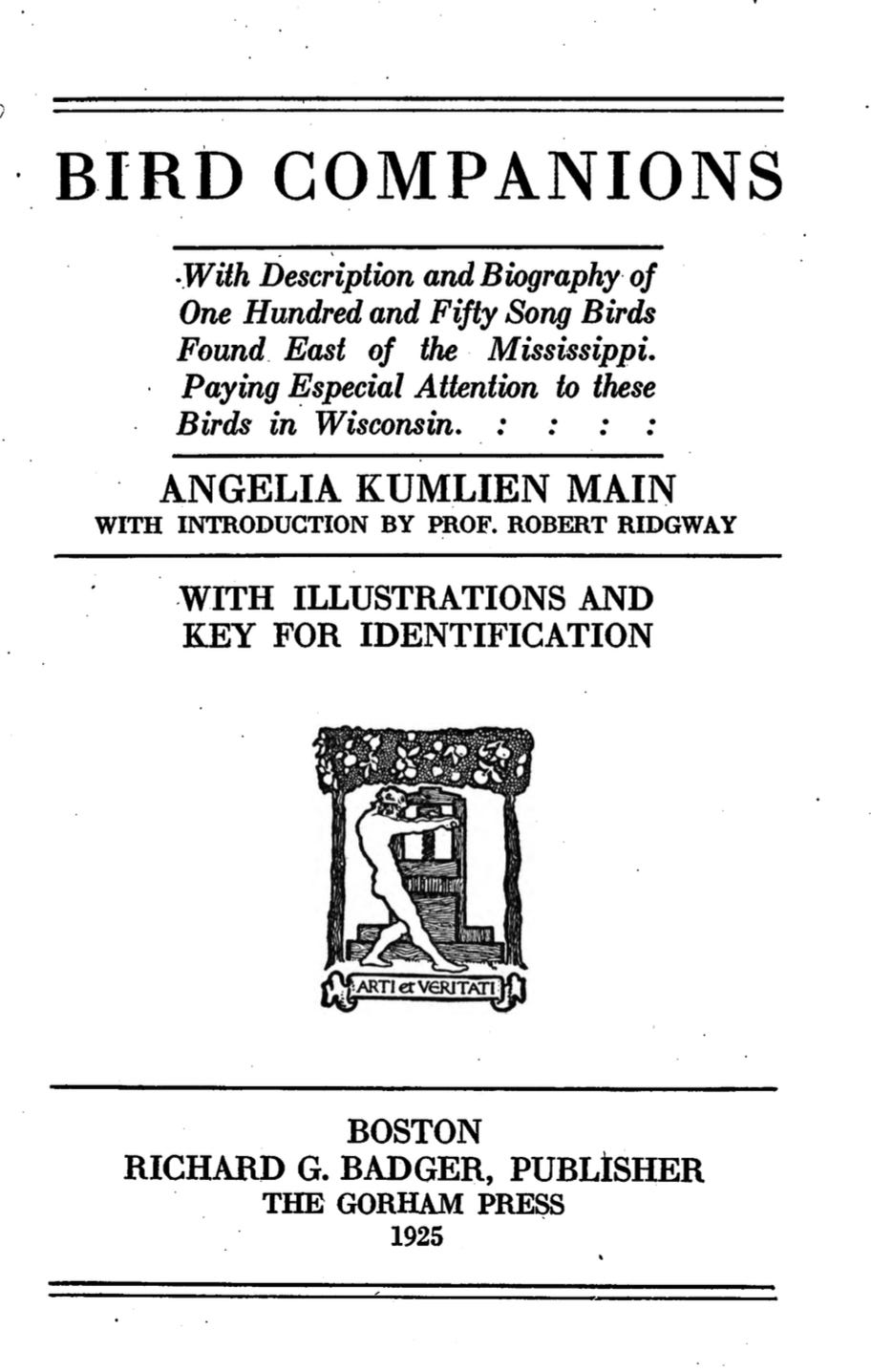A different kind of bird guide
Angelia Kumlien Main carved her own path with the charming Bird Companions.

It’s human nature to strive for the superlatives: the first, the most, the greatest, the rarest. This is especially true in mainstream birding, which tends to prize the less common birds or the longest life lists.
Though now we use any number of AI-powered tools to help us, the underpinnings of this identification obsession may stem from the early 20th-century bird field guides. Think of Roger Tory Peterson, whose innovative bird guide included arrows pointing out field marks, the distinctive stripes, streaks, and colors possessed by every bird. His written descriptions were simple yet dry, plain-stating the key attributes of every species. Perhaps one effect of the arrows and this flat, scientific approach was that it kept us focused on identification rather than the more romantic and less tangible beauty of our avifauna. It was quantitative and objective rather than subject to interpretation or even tinged with sentimentality.
Angelia Kumlien Main’s Bird Companions, written in 1925, is the counterpoint to the almighty quantification evident in most bird guides. It was a poetic precursor to Peterson, Kaufman, and Sibley.
Bird Companions is mostly focused on songbirds, and many entries are peppered with Main’s observations from her home in southern Wisconsin and the surrounding environs. This is a more personal sort of bird guide, and in that way it is wonderfully approachable and accessible to novices and experts alike.
Just take this description of the Song Sparrow:
In late February or early March while the clouds are still gray and the air has no touch of spring, he sings his courageous song of perfect trust and good cheer. To me this gentle comrade sings in his rapturous strain a song without words, but one which suggests things that are pure and of what I want Heaven to be like. The simple melody is composed of only about a dozen notes, but it is sung with a great many variations. After other birds in the chorus are silent, this bird of happiness is still heard.
Birding is about serendipitous moments, lasting experiences, and surprising encounters. It’s appreciating avian life in the broader context of the ecosystem and taking in all of one’s surroundings.
Main captures this in a description of the garrulous Yellow-breasted Chat, written after a jaunt to collect some blackberries:
After working for some time, all the while enjoying my surroundings, I felt that I was being laughed at and barked at by a boy and his dog. I heard the bark and chuckle, now here and now there; after looking in every direction I decided that neither person nor dog was near. After some searching and much listening, I found the actor in this strange vocal performance to be his clownship, the yellow-breasted chat. I was filled with amusement and delight that a bird could assume the role of a human ventriloquist, and could even bark like a dog.
It’s difficult to place Main in the lineage of birding compendia from Alexander Wilson to John James Audubon to Charles Cory and Robert Ridgway. And interestingly enough it’s Ridgway who wrote the introduction to Bird Companions. Main indeed came from a well-known birding family. But she holds a unique place along with perhaps Florence Merriam Bailey and her Birds Through An Opera-Glass from 1899.
Describing birds can take many forms. But so does the act of birding itself. And in that way Bird Companions is a masterpiece of the craft.
Thanks to all who’ve taken the step to become a paid subscriber. If you’d like to show your support for this newsletter, click the button above and upgrade to paid. The vast majority of subscribers receive this newsletter for free because of your support.





I really liked reading Main's Bird Companion excerpts.
I want my birding experience about seeing beauty and wonder. I don't want to become competitive and always be chasing the next bird.
I enjoyed your post!